Curious about harnessing the power of the sun to generate electricity for your home?
We will explore everything you need to know about solar panels, from understanding how they work to the different types available.
Delve into the benefits of using solar panels at home, the steps to install them, maintenance requirements, and the costs associated with this sustainable energy option.
Let’s shed some light on the world of solar energy!
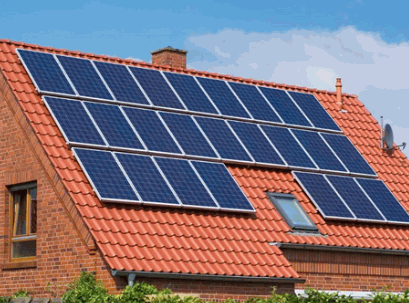
What Are Solar Panels?
Solar panels are devices that convert sunlight into electricity by utilizing the photovoltaic effect in solar cells, making them a pivotal component of renewable energy systems.
Each solar panel consists of multiple solar cells, which are typically made of silicon. When sunlight hits these cells, it excites the electrons, creating a flow of electricity. This process is made possible by the photovoltaic effect, where the cells generate an electric current when exposed to sunlight. The electricity produced can then be used to power homes, businesses, or even entire communities.
Solar panels play a crucial role in harnessing solar energy and reducing dependence on fossil fuels, thus contributing to a cleaner and more sustainable future.
Take a look: Can You Use Solar Panels To Heat A Hot Tub
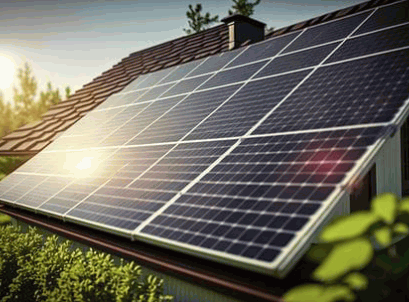
How Do Solar Panels Work?
Solar panels work by capturing sunlight and converting it into DC electricity, which is then managed by a charge controller and converted to AC electricity by an inverter for home use.
This process begins with photovoltaic cells within the solar panels absorbing sunlight and generating an electric current. The charge controller ensures that the DC electricity produced is at the optimal voltage for the system, preventing overcharging of batteries. It also helps regulate the flow of electricity to safeguard the batteries and other components.
Once the electricity is regulated, the inverter’s role comes into play. The inverter converts the DC electricity into AC electricity, the form of energy used in most homes. This transformation enables electricity to power household appliances and electronics seamlessly.
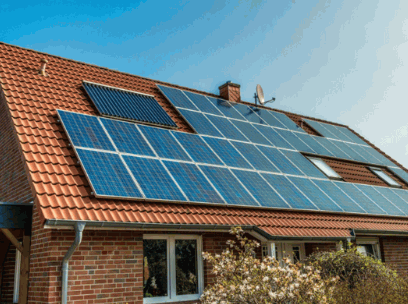
What Are The Types Of Solar Panels?
There are several types of solar panels available for harnessing solar energy, each with distinct features and best-use scenarios, including monocrystalline, polycrystalline, thin-film, and bifacial solar panels.
Monocrystalline Solar Panels
Monocrystalline solar panels are made from single-crystal silicon, offering high efficiency and a sleek appearance, making them a popular choice for both residential and commercial installations.
Due to their high-efficiency rates, monocrystalline panels require less space than other types of solar panels, making them particularly ideal for rooftops with limited area for installation. Although they are known for their higher initial cost compared to polycrystalline panels, their long-term cost-effectiveness is undeniable, as they tend to have a longer lifespan and better performance over time.
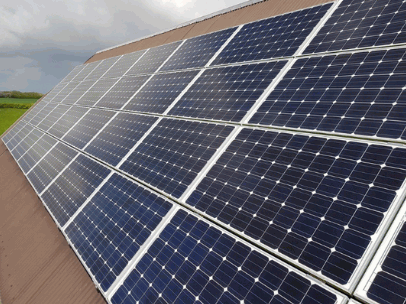
Polycrystalline Solar Panels
Polycrystalline solar panels, made from multiple silicon crystals, are known for their lower cost and moderate efficiency, making them a cost-effective option for many homeowners.
Although they are slightly less efficient than monocrystalline panels, polycrystalline panels are easier and more affordable to produce due to their manufacturing process. These panels perform well in conditions of high temperatures and are a popular choice for residential installations where space is not a constraint.
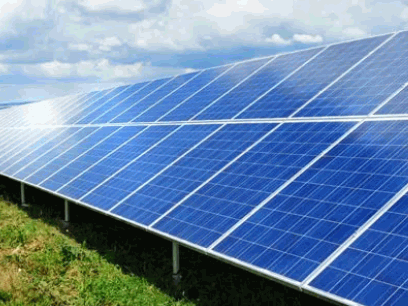
Thin-Film Solar Panels
Thin-film solar panels are characterized by their lightweight and flexible nature, making them suitable for a variety of unconventional applications, including integration into buildings and portable systems.
One of the key advantages of thin-film solar panels is their low manufacturing cost compared to traditional silicon solar panels, making them an attractive option for large-scale projects.
Their flexibility allows them to be installed on curved or irregular surfaces, expanding the possibilities for solar power generation in various settings.
While thin-film panels may have slightly lower efficiency levels than crystalline silicon panels, their versatility and lower maintenance costs make them a popular choice for specific use cases such as on vehicles or in wearable technology.
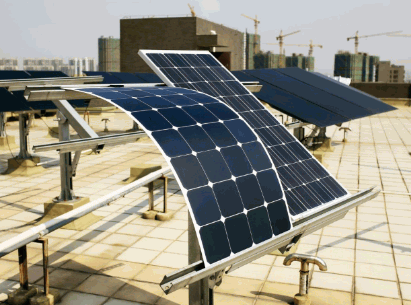
Bifacial Solar Panels
Bifacial solar panels can capture sunlight on both sides, significantly increasing their energy output and efficiency compared to traditional single-sided panels.
When sunlight hits the front side of the panel, a portion is absorbed by the photovoltaic cells, while the transparent backside allows light to pass through. This light is then reflected off the surface below and back onto the photovoltaic cells, generating additional electricity.
One of the major benefits of bifacial solar panels is their ability to harness more energy from the same amount of space, making them a cost-effective option for maximizing power generation.
These panels are commonly used in various settings like commercial buildings, solar farms, and residential rooftops, where space efficiency and enhanced performance are crucial.
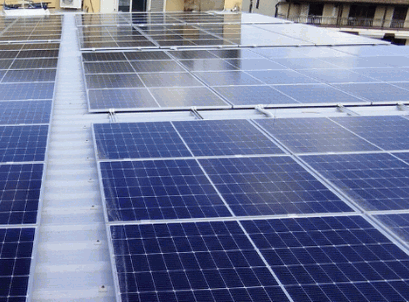
What Are The Benefits Of Using Solar Panels At Home?
Installing solar panels at home offers numerous benefits, including significant cost savings on electricity bills, contributions to renewable energy, increased property value, and enhanced energy independence.
Cost Savings On Electricity Bills
One of the most compelling benefits of installing solar panels at home is the significant reduction in electricity bills, as you generate your own energy and rely less on the local utility company.
By leveraging the capabilities of the sun, solar panels can help you save money in the long run by providing a sustainable and cost-effective energy alternative. The energy independence achieved through solar power means that you are less vulnerable to fluctuations in utility prices and can have more control over your energy usage.
Environmental Benefits
Using solar panels contributes to environmental sustainability by reducing reliance on fossil fuels and lowering the carbon footprint of your home.
Solar panels play a crucial role in promoting renewable energy sources that are clean and abundant. By harnessing sunlight, these panels generate electricity without emitting harmful greenhouse gases into the atmosphere. This shift towards solar power helps in combating climate change and preserving our planet for future generations.
Increase In Property Value
Installing solar panels can significantly increase your property’s value, as potential buyers are often willing to pay a premium for homes with lower energy costs and sustainable energy solutions.
When you invest in solar panels, you not only reduce your carbon footprint but also save on monthly utility bills, making your property more attractive to environmentally conscious buyers. With the rising awareness of climate change and the importance of renewable energy sources, properties equipped with solar panels tend to stand out in the real estate market.
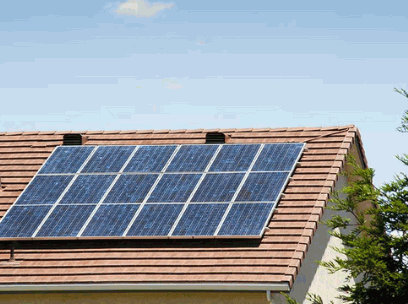
What Are The Steps To Install Solar Panels At Home?
Installing solar panels at home involves several key steps, starting with assessing your energy needs and determining the best location for the panels, followed by obtaining necessary permits, installing the mounting system, and connecting everything to the inverter, electrical panel, and utility grid.
Assess Your Energy Needs
Assessing your energy needs is the first step in the solar panel installation process, which involves evaluating your home’s energy consumption and using a solar calculator to estimate the required system size.
Understanding how much energy your household uses on a daily basis is crucial for designing an effective solar power system. By utilizing a solar calculator, you can input data such as your average kWh usage, location, roof tilt, and shading to determine the optimal size and layout of your solar panel array.
This tool takes into account various factors to help you gauge the number of solar panels needed, their orientation, and the potential energy savings. Properly sizing your solar system ensures that you produce enough electricity to cover your consumption, leading to a more sustainable and cost-effective energy solution.
Determine The Best Location For Panels
Determining the best location for your solar panels is crucial; typically, roof mounts with optimal sunlight exposure are ideal, but ground mounts can also be considered.
When choosing the placement of your solar panels, evaluate the orientation of your roof or property to maximize sunlight hours during the day. South-facing roofs often receive the most sunlight in the northern hemisphere, while north-facing roofs are preferable in the southern hemisphere. Shading analysis is vital to ensure there are no obstructions like trees or buildings blocking the sun’s rays. Consider the angle of the roof; a tilt angle that matches your latitude can optimize energy production.
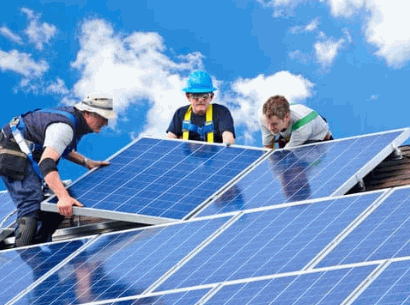
Obtain Necessary Permits And Approvals
Before installing solar panels, it’s essential to obtain the necessary permits and approvals from your local utility company and follow the installation manual guidelines.
The process of acquiring permits and approvals for solar panel installation involves several key steps. You will need to submit an application to the local authorities outlining your project details and intentions. This often includes information on the size and positioning of the panels, as well as any structural modifications that may be required. Following this, the authorities will review your application and may conduct an inspection to ensure compliance with safety and zoning regulations.
Install Mounting System
The next step is to install the mounting system, which secures the solar panels to the roof or ground, often requiring the expertise of a professional installer.
There are several types of mounting systems available, such as rooftop mounts, ground mounts, and pole mounts, each suitable for different settings and needs. Rooftop mounts are the most common choice for residential installations, attaching directly to the roof’s surface. Ground mounts, on the other hand, are ideal for properties without adequate roof space or for installations that require a specific angle. Pole mounts offer versatility by allowing the panels to be placed at a distance from the property.
Professional installation is crucial for ensuring the mounting system is correctly installed to bear the weight of the solar panels and withstand environmental conditions. A qualified installer will evaluate the structural integrity of the roof or ground, determine the best placement for optimal sun exposure, and secure the mounting system to prevent any damage or inefficiencies over time.
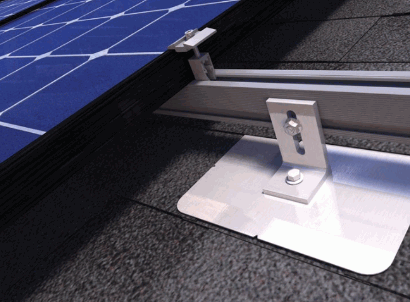
Connect Panels To Inverter
Once the mounting system is in place, the solar panels are connected to the inverter using solar wires, converting the DC electricity generated into usable AC electricity.
Proper wiring is crucial to ensure the smooth flow of electricity from the solar panels to the inverter. The solar wires, specifically designed for outdoor use, carry the generated power to the inverter efficiently.
Ensuring that the connections are secure and correctly made is essential for optimal energy conversion. Poorly connected wires can lead to power loss, affecting the overall performance of the solar power system.
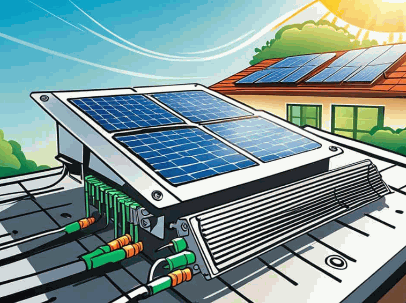
Connect The Inverter To The Electrical Panel
After connecting the panels to the inverter, the next step is to link the inverter to your home’s electrical panel, allowing the converted AC electricity to power your household.
This crucial connection between the inverter and electrical panel is what enables the solar energy generated from the panels to be distributed efficiently throughout your home. The electrical panel serves as the central hub that regulates the flow of electricity, ensuring that the power is directed to where it is needed. By tying the inverter into the panel, you ensure that your household appliances and devices can access the clean energy produced by your solar panels, reducing reliance on the grid and lowering your energy bills.
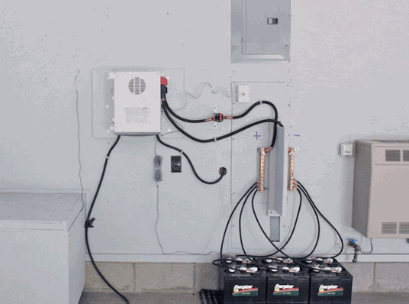
Connect To Utility Grid
For a grid-tied solar system, you need to connect to the utility grid, enabling net metering in collaboration with your local utility company to manage excess energy production.
Net metering allows you to send surplus electricity generated by your solar panels back into the grid, often receiving credits for this contribution. This means that during times when your solar system produces more energy than you need, such as sunny days when energy consumption is low, you can effectively ‘store’ this excess energy with the utility. In return, you can draw this credited energy back from the grid when your system is not generating enough power, such as at night or on cloudy days.
What Are The Maintenance Requirements For Solar Panels?
Maintaining solar panels is crucial for ensuring optimal energy production and longevity, involving regular cleaning, checking for damage, and monitoring energy output.
Regular Cleaning
Regular cleaning of solar panels is essential to remove dirt and debris that can reduce their efficiency and energy production.
Solar panels should ideally be cleaned every 6 months to maintain their optimal performance. Depending on the location, panels might require more frequent cleaning, especially in areas prone to dust or bird droppings.
When cleaning the panels, it’s important to use a gentle cleaning solution, such as mild soap and water, to avoid damaging the panels’ surface. A soft sponge or cloth can be used to scrub gently without scratching the panels. It is recommended to clean the panels early in the morning or late in the evening to prevent the cleaning solution from evaporating quickly under the sun.
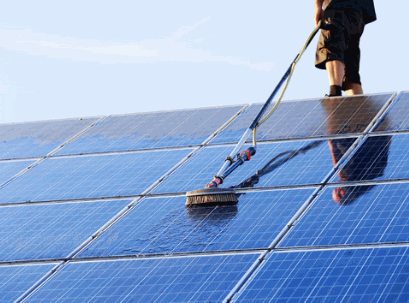
Checking For Damage
Checking for damage, such as cracks or loose connections, is a critical part of solar panel maintenance to ensure they function correctly and safely.
Regular inspections help in identifying issues early on, preventing potential malfunctions, and ensuring the longevity of your solar panels.
If any damage is discovered during inspection, it is important to address it promptly to avoid further deterioration or safety risks.
- Record the specific damage observed and its location for future reference.
- Contact a professional solar panel technician to assess the extent of the damage.
- Follow their recommendations for repair or replacement to maintain optimal performance.
Monitoring Energy Production
Monitoring the energy production of your solar panels helps to ensure they operate efficiently, often facilitated by monitoring systems integrated with the solar charge controller.
These monitoring systems, equipped with sensors and software, constantly gather data on the amount of electricity generated by the solar panels. The data collected includes the power output, system efficiency, and potential issues that may affect performance.
By analyzing this information, homeowners can identify any deviations from expected output and take corrective actions promptly. This real-time monitoring ensures that the solar panels are functioning optimally, maximizing their energy production and overall efficiency.
What Are The Costs Associated With Installing Solar Panels?
The costs associated with installing solar panels can be significant, covering initial installation, ongoing maintenance, and potential savings that contribute to a return on investment over time.
Initial Installation Costs
Initial installation costs for solar panels include the price of the panels themselves, professional installer fees, and additional equipment such as inverters and mounting systems.
Breaking down these costs further, the price of solar panels can vary depending on the brand, efficiency, and capacity you choose. Professional installer fees cover labor costs and expertise required for a successful installation. In addition, inverters are essential for converting solar energy into usable electricity, while mounting systems ensure secure placement on your roof or property. It’s important to understand these components to budget effectively for your solar panel installation.
Maintenance Costs
Maintenance costs for solar panels primarily involve routine cleaning and occasional repairs to ensure the system’s efficiency and longevity.
In terms of routine maintenance, regular cleaning of the solar panels is essential to prevent the accumulation of dirt, dust, and debris. This not only helps in maximizing their energy production but also ensures their durability over time. Reducing the amount of shade that falls on the panels can also minimize maintenance needs, as shaded panels are less efficient and prone to issues. Scheduling annual professional inspections can detect any potential problems early, saving you from costly repairs down the line.
Potential Savings And Return On Investment
The potential savings from reduced electricity bills, combined with the benefits of energy independence, can lead to a significant return on investment for solar panel installations over time.
When considering the financial aspects of installing solar panels, it’s essential to calculate the long-term benefits accurately. One way to assess the return on investment is by determining the payback period, which is the time it takes for the cost of the solar panel system to be recouped through electricity savings.
Calculating the payback period involves dividing the total cost of the installation by the annual savings on electricity bills. This simple formula provides a clear picture of how soon the initial investment will start generating positive cash flow.
Solar panels offer a reliable and predictable source of energy, shielding homeowners from fluctuating utility prices. This stability not only contributes to cost savings but also adds to the overall appeal of solar power as a sustainable and environmentally friendly solution.
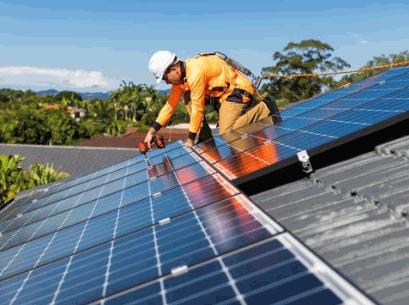

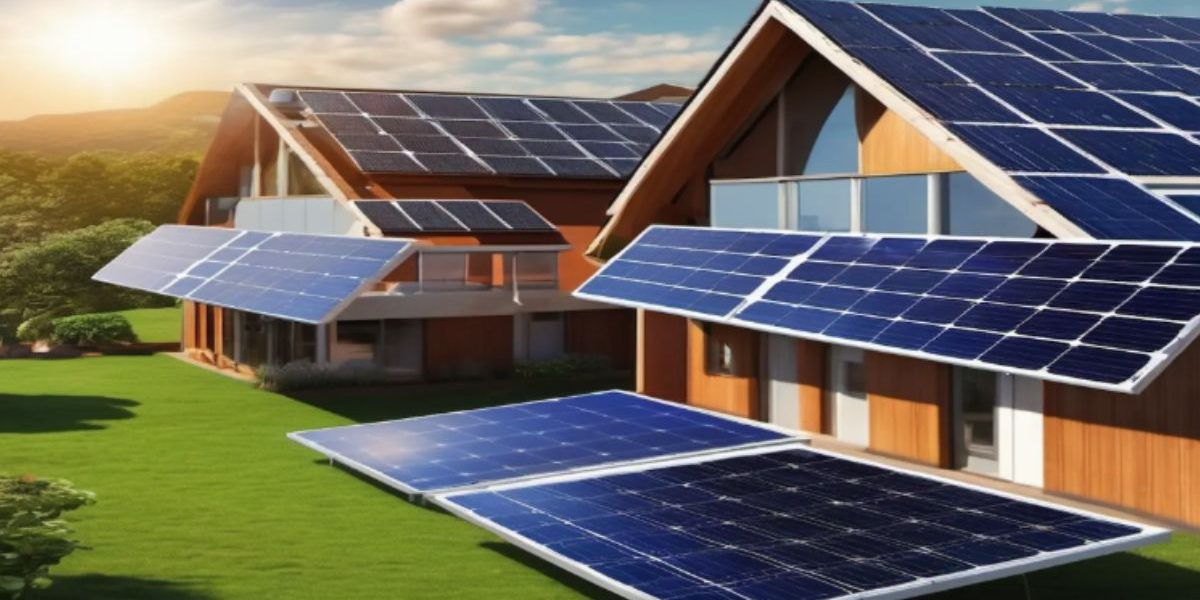
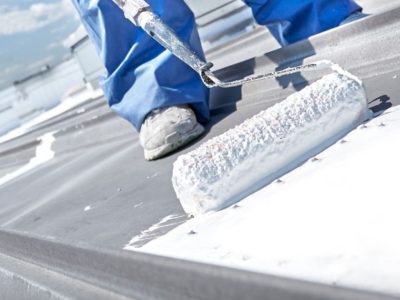

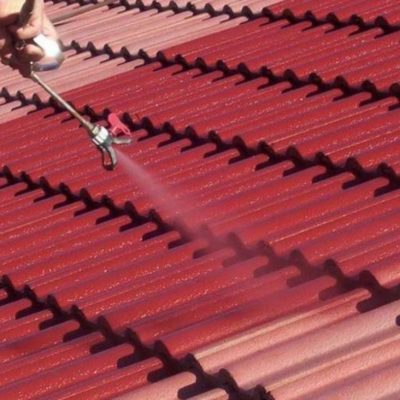

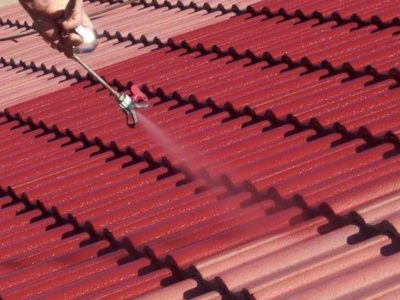

Comments